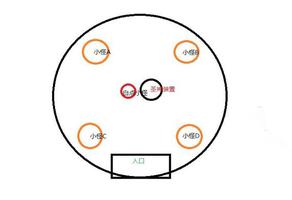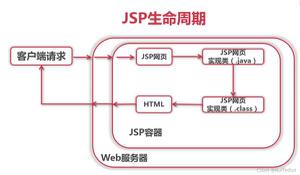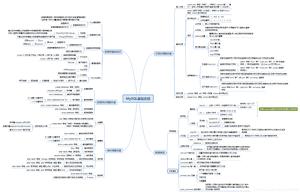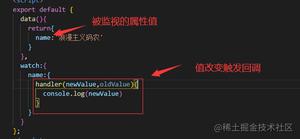Vue知识点归类总结

Vue知识点总结
注:个人笔记不适用于他人学习~~
1. 事件修饰符
Vue中事件修饰符事件的执行阶段:捕获阶段(父元素) --> 事件源阶段(被点击的内部子元素) --> 事件冒泡阶段
1. stop 阻止冒泡
如:
<div id="inner" @click="innerClick">
<input type="button" value="按钮" @click.stop="btnClick">
</div>
2. prevent 默认事件
如:
<a href="http://www.baidu.com" @click.prevent="linkClick">阻止a元素跳转的默认行为</a>
3. capture 事件监听器使用事件捕获模式
事件捕获模式 和 事件冒泡模式 只能二选一
如:
鼠标点击input元素, 先触发外层元素的innerclick事件
<div id="inner" @click.capture="innerClick">
<input type="button" value="按钮" @click="btnClick">
</div>
4. self 当事件在该元素本身触发时才会触发自生绑定的事件
5. once 只触发一次
如:第一次点击时才会被触发
<input type="button" value="按钮" @click.once="btnClick">
2. 过滤器
1. 全局过滤器Vue.filter(\'过滤器名称\', function() {})
2. 私有过滤器
var vm = new Vue({
data: {},
filters: {}
});
vm.$mount(\'app\')
3. vue实例--设置渲染区域的两种写法
// 创建 Vue 实例,得到 ViewModel vm1. var vm = new Vue({
el: \'#app\'
});
2. var vm2 = new Vue()
vm2.$mount(\'#app2\') // 按需挂载 推荐使用
4. 自定义指令
// v-focus=\'value\'1. 全局指令
Vue.directive(\'指令名称(如focus)\', {
bind: function(el, binging) {
// 当解析到元素绑定的自定义指令时调用
el.style.color = \'red\'
el.focus()
binging.name // 指令名称 不包含 v-
binging.value // 指令的值 value
},
inserted: function(el) {
// 当指令绑定的元素被到插入到其父元素时调用
el.focus()
}
})
2. 私有指令
var vm = new Vue({
data: {},
directives: {
focus: {
bind: {...},
inserted: {...}
}
}
});
/* 注:
1. 自定义指令可以用来进行dom操作
2. 一定要注意调用时间
3. 样式设定不需要考虑时间 因为设定了就会存在 el.style.color
4. 解析到时如果元素还没渲染到页面,事件不会生效 el.focus
5. 按键修饰符
使用:v-on:keyup.enter.enter .tab .delete (“删除”和“退格”键) .esc .space 等.
6. axios
1. 挂载axiosVue.prototype.$http = axios
注:axios不支持JSONP
7. 组件创建/使用
注册全局组件:1. Vue.component(\'组件名\', 组件的构造函数)
如: const com1 = Vue.extend({
template: \'<h1>创建全局组件----第一种方式</h1>\'
})
Vue.component(\'com1\', com1)
2. Vue.component(\'com2\', {
template: \'<h1>创建全局组件----第二种方式</h1>\'
})
3. <template id=\'tmpl-id\'>
<h1>创建全局组件----第三种方式</h1>
</template>
Vue.component(\'com3\', {
template: \'#tmpl-id\'
})
注:
1. 组件是特殊Vue实例
2. 使用template方式创建的全局组件 UI模板元素必须放在在注册组件前,
3. 模板元素不能放入Vue实例控制的app容器中,因为会被当成组件渲染到界面上
注册私有组件
let vm = new Vue({
data: {},
components: {
\'com4\': {
template: \'<h1>创建私有组件----第一种方式</h1>\'
}
}
})
定义组件的私有data methods
Vue.component(\'com2\', {
template: \'<h1>定义组件的私有数据----{{ msg }}</h1>\',
data: function() {
return {
msg: \'组件私有数据msg\'
}
}
})
注:
1. 组件私有数据data必须是function类型,且必须return一个对象
2. 每次引用组件data方法return出的对象都是一个新的对象,保证每次创建的组件数据私有化
使用component标签结合is属性切换多个组件
<div>
<component :is="\'组件名\'"></component>
// is属性用来控制要渲染的组件
</div>
<script>
Vue.component(\'com1\', {
template: \'<h1>组件1</h1>\'
})
Vue.component(\'com2\', {
template: \'<h1>组件2</h1>\'
})
Vue.component(\'com3\', {
template: \'<h1>组件3</h1>\'
})
</script>
8. 使用hash值模拟路由实现
// hash # 不会刷新页面以及发送HTTP请求,只是实现客户端页面的定位// hash # 可以修改浏览器的历史纪录
window.onhashchange() // 监听页面的hash值的改变
location.hash() // 获取当前页面hash值
9. 路由
1. const login = { template: \'<h1>路由----登录</h1>\'
}
2. const router = new VueRouter({
routes: [ // 路由规则
{path: \'hash路径\', component: \'组件物理地址\'},
{path: \'/login\', component: login}
]
})
3. new Vue({
data: {},
methods: {}
router: router,
})
4. <div>
<router-link to=\'路由路径\'></router-link> // 负责路由跳转,类似于a链接
<router-view></router-view> // 负责UI界面的呈现
</div>
5. 设定默认的根路由
{path: \'/\', redirect: \'重定向到某路由\'}
6. 路由传参
a. query传参(即问号传参)
<router-link to=\'/login?id=536\'></router-link>
// to="{path:\'/login\',query: {id:536}}"
this.$route.query // 获取url问号后面传递的参数
注:query传参(问号传参)不需要修改对应的路由规则 对比params传参
b. params传参
<router-link to=\'/login/536/lien\'></router-link>
{path: \'/login/:id/:name\', component: login}
this.$route.params
c. props 获取参数
{path: \'/login/:id/:name\', component: login, props: true}
注:props: true这种获取参数的形式好处是 不需要在使用\'this.$route.\'的形式,直接
在组件中使用 props: [\'id\', \'name\']接收参数即可
7. 子路由
{
path: \'/account\',
component: account,
children: [
{path: \'login\', component: login}
// 子路由规则path属性值前不需要再加 \'/\'
]
}
8. 编程式导航--实现路由跳转
标签式 <router-link to=\'\'>
<button @click=\'goRouter\'></button>
goRouter() {
this.$router.push(\'/login/\' + this.id)
}
this.$router.go(-1) 后退,用来实现面包屑导航
注:
this.$route 是用来获取参数的
this.$router 是用来实现编程是路由跳转的
10. watch、computed属性使用
UI界面:name = xing + mingnew Vue({
data: {
xing: \'\',
ming: \'\'
name: \'\'
},
watch: {
// watch 应用场景:监听虚拟数据如监听url的改变(单个数据)
\'ming\': function(newVal, oldVal) {
this.name = this.xing + newVal
},
\'$route.path\': function(newVal, oldVal) {}
}
computed: {
\'name\': function() {
return: this.xing + this.ming
// \'name\'即为计算属性
// 只要计算属性的function中,任何依赖的数据发生变化,就会触发重新求值
// 计算属性的值,如果未发生变化,则会被缓存供之后使用
}
}
})
// get set使用
computed: {
\'name\': {
get() {
// 获取name的值触发
return: this.xing + this.ming
},
set(val) {
// name的值自身发生改变,触发
const arr = val.split(\'-\')
this.xing = arr[0] || \'\'
this.ming = arr[1] || \'\'
}
}
}
11. Vuex使用
// 全局环境实现数据共享1. 导入并注册 Vue.use(Vuex)
2. 创建
store = new Vuex.Store({
state: {
// state用来存储数据
count: 0
},
mutations: {
// 专门用来修改state中的数据
add(state, arg) {
// mutations中的方法第一个参数永远都是 state
// 自定义参数只能有一个,多个参数可以使用数组或对象
state.count += arg
}
},
getters: {
// getter 类似于计算属性----包装数据类似过滤器----如添加前缀(不会修改原数据)
nameInfo(state) {
let xing = \'li\', ming = \'en\'
state.name = xing + ming
return \'我的名字是:\' + state.name
}
},
actions: {
// actions类似于mutations
// actions里进行异步操作、mutations里进行同步操作
// mutations中的异步操作,可以正常执行,但是vue-tools调试插件无法监听数据变化
newAdd(context) {
// actions中的方法,可以提交对应的mutations方法
// action中不能直接操作state,如果想要修改state,只能在actions中,提交对应的 mutations方法
context.commit(\'add\')
}
}
})
new Vue({
el: \'#app\',
store: store, // 挂载到Vue实例上
methods: {
increment() {
//直接使用this.$store.state修改数据
// this.$store.state.count++ 强烈不推荐
// this.store.commit可以调用mutations中的方法修改数据----推荐使用
let arg = 2
this.store.commit(\'add\', arg)
}
}
})
3. UI界面
3.1 state----UI层使用方式
3.1.1 <h1>数量:{{ $store.state.count}}</h1> ---- 较为麻烦
3.1.2 mapState函数获取数据----返回值一个对象
computed: {// 定义计算属性区域
...mapSate([\'count\'])
}
3.2 mutations----UI层使用方式
3.2.1 this.store.commit(\'add\', \'可选实参\')
3.2.2 mapMutations----映射mutations中的方法到methods中
methods: {// 定义计算属性区域
...mapMutations([\'add\'])
}
3.3 getters----UI层使用方式
3.3.1 this.$store.getters.nameInfo
3.3.2 mapGetters----映射到计算属性中
computed: {// 定义计算属性区域
...mapGetters([\'nameInfo\'])
}
3.4 actions----异步操作
3.4.1 mapActions---映射mutations中的方法到methods中
methods: {// 定义计算属性区域
...mapActions([\'newAdd\'])
}
3.4.2 this.store.dispatch(\'newAdd\')
---------------------------------------------------------------2018/10/11------------------------------------------未完
以上是 Vue知识点归类总结 的全部内容, 来源链接: utcz.com/z/378814.html









